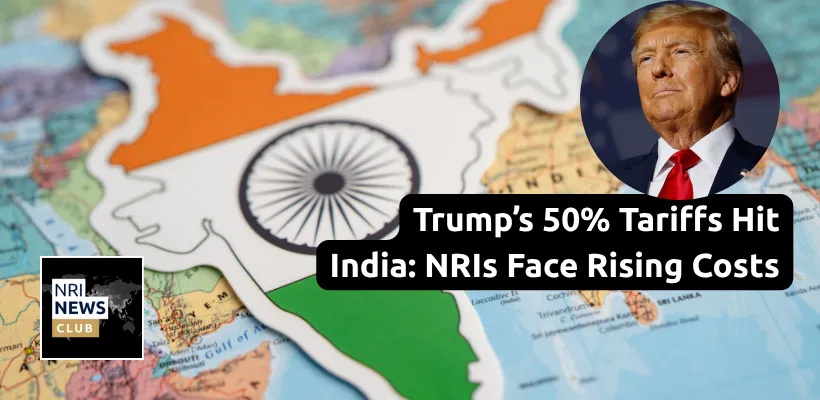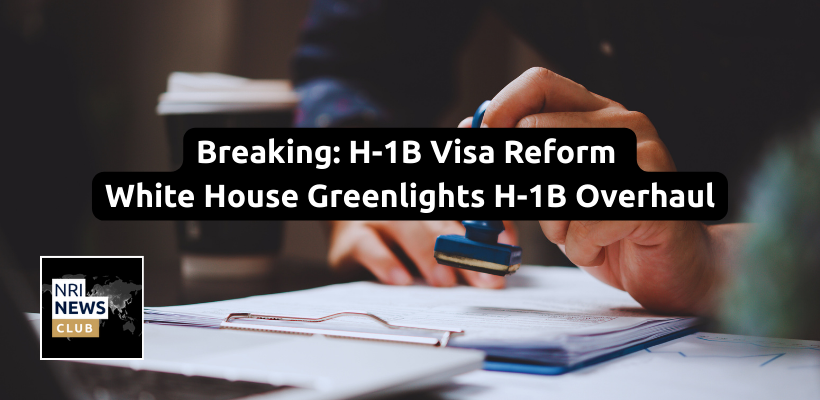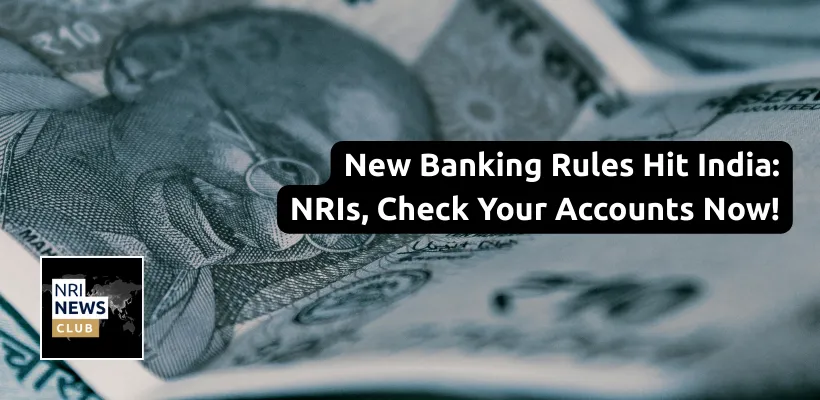On August 6, 2025, U.S. President Donald Trump signed an executive order imposing an additional 25% tariff on Indian goods, bringing the total tariff rate to a staggering 50%. This follows an earlier 25% tariff set to take effect on August 7, marking a significant escalation in trade tensions between the United States and India, one of its key trading partners. The move, described by Trump as a response to India’s continued purchase of Russian oil, has sparked widespread debate about its implications for bilateral trade, global geopolitics, and the Indian diaspora in the United States.
Background of the Tariff Hike
The new tariffs are part of Trump’s broader trade policy aimed at addressing what he perceives as unfavorable trade practices, particularly India’s importation of Russian oil, which he claims fuels Moscow’s war efforts in Ukraine. In a CNBC interview, Trump stated, “They’re fueling the war machine. And if they’re going to do that, then I’m not going to be happy.” The executive order cites national security and foreign policy concerns, asserting that India’s oil imports pose an “unusual and extraordinary threat” to the United States.
The initial 25% tariff, announced last week, was already set to impact Indian exports such as textiles, gems and jewelry, auto parts, and seafood. The additional 25% levy, effective September 17, 2025, will further increase costs for these goods, potentially reducing India’s exports to the U.S. by 40–50%, according to the Global Trade Research Initiative (GTRI). The U.S. is India’s largest trading partner, with bilateral trade reaching $190 billion in 2024 and Indian exports to the U.S. totaling $87.4 billion, resulting in a $46 billion trade surplus for India.
India’s Response: Defiance and Diplomacy
India has strongly criticized the U.S. tariffs, calling them “unfair, unjustified, and unreasonable.” Foreign Ministry spokesman Randhir Jaiswal emphasized that India’s oil imports are driven by market factors and the need to ensure energy security for its 1.4 billion citizens. He argued that India’s actions align with those of other nations, including the U.S. and EU, which continue to trade with Russia despite their criticisms. Jaiswal noted that U.S.-Russia trade was worth $3.5 billion in 2024, highlighting what India sees as a double standard.
India’s Ministry of External Affairs issued a statement asserting that the country will take “all actions necessary to protect its national interests.” While hinting at potential retaliatory tariffs on American goods like oils, chemicals, and aerospace products, India has so far advocated for a measured response. Ajay Srivastava, a former Indian trade official, recommended that India avoid immediate retaliation for at least six months to allow for meaningful trade negotiations. He suggested that India could pivot to alternative markets such as the EU, Gulf Cooperation Council (GCC), and Africa, leveraging existing free trade agreements (FTAs) with countries like the UK, UAE, and Australia.
Prime Minister Narendra Modi’s government has also emphasized India’s strategic autonomy. Posts on X reflect a sentiment that India, under Modi’s leadership, is adopting a more assertive stance, potentially strengthening ties with Moscow and Beijing to counter U.S. pressure. This aligns with India’s role in the BRICS bloc, which Trump has criticized as “anti-United States.”
Economic Implications for India
The tariff hike is expected to significantly impact India’s economy. Goldman Sachs slightly lowered India’s GDP growth projections to 6.5% for 2025 and 6.4% for 2026, citing uncertainty from the tariffs. However, the firm also reduced India’s inflation forecast to 3.0% for both years, suggesting some resilience in the economy. The Federation of Indian Export Organisations called the decision “extremely shocking,” warning that 55% of India’s exports to the U.S. could be affected, particularly in job-creating sectors like textiles and auto parts.
Despite these challenges, some analysts argue that India’s long-term economic trajectory remains strong. The country’s growing FTAs and potential to expand trade with non-U.S. markets could mitigate the impact. Additionally, India’s pharmaceutical and electronics sectors, including iPhone production, are currently exempt from the tariffs, providing some buffer.
Geopolitical Context
Trump’s tariffs are part of a broader strategy to punish countries trading with Russia and Venezuela, with India being the first to face such “secondary sanctions.” The timing of the tariff announcement coincided with a meeting between Trump’s envoy, Steve Witkoff, and Russian President Vladimir Putin in Moscow, aimed at securing a peace deal in Ukraine. This suggests that the tariffs are not only economic but also geopolitical, signaling Trump’s intent to pressure allies and adversaries alike to align with U.S. foreign policy goals.
India, however, has defended its trade with Russia, noting that its oil imports surged to $68.7 billion in the year ending March 2025, driven by market dynamics and energy needs. India’s response also highlighted that the EU, Russia’s third-largest trading partner, has faced less scrutiny despite significant trade volumes.
What NRIs Can Do
The 50% tariff hike on Indian goods, effective September 17, 2025, will make Indian products like textiles, jewelry, auto parts, and seafood significantly more expensive in the U.S., directly impacting Non-Resident Indians (NRIs) who rely on these goods for personal use, cultural practices, or business. The Indian diaspora, numbering over 4.5 million in the U.S., can take proactive steps to navigate the increased costs and mitigate the tariffs’ impact on their daily lives:
-
Explore Alternative Sourcing Options: With Indian imports becoming costlier, NRIs can source similar products from countries not subject to the new tariffs, such as Bangladesh or Vietnam, which offer competitive textiles and apparel. Online platforms like Amazon or Etsy often list suppliers from these regions, allowing NRIs to compare prices and maintain access to culturally significant items.
-
Support Local Indian-American Businesses: Many NRIs operate or shop at small businesses that import Indian goods. To offset higher costs, NRIs can prioritize bulk purchases from Indian grocery stores or wholesalers before the tariffs fully take effect, locking in current prices. Collaborating with community groups to organize group buying can reduce costs further. Additionally, supporting Indian-American entrepreneurs who source domestically or from tariff-exempt countries can help sustain cultural supply chains.
-
Adjust Consumption Habits: The tariff hike may increase prices for Indian products by 30–50%, according to GTRI estimates. NRIs can adapt by prioritizing essential items, such as spices or religious goods, over luxury imports like high-end jewelry. For non-essential items, consider U.S.-made alternatives or products from Indian brands with U.S. manufacturing, such as Amul’s dairy products produced locally under license.
-
Leverage Digital Marketplaces and Remittances: NRIs can use platforms like IndiaMART or Udaan to connect directly with Indian suppliers who may offer discounts to offset tariff costs. Sending remittances to family in India to purchase goods locally and ship them personally (within U.S. customs limits) can bypass some retail markups. In 2024, NRIs sent over $100 billion in remittances to India, and redirecting a portion to support small exporters can help them weather the tariff storm.
- Advocate for Policy Relief: The tariffs will raise living costs for NRIs, particularly those running import-dependent businesses like restaurants or retail. NRIs can join diaspora organizations, such as the Federation of Indian Associations (FIA), to lobby for exemptions or phased tariff implementation. Engaging with local chambers of commerce to highlight the impact on small businesses can amplify their voice. Social media campaigns on X, using hashtags like #IndiaUSATrade, can raise awareness about the tariffs’ effect on NRI communities.
Direct Impact on NRIs’ Daily Lives
The tariff hike will directly affect NRIs’ daily lives in several ways:
-
Higher Costs for Cultural Goods: Indian groceries, clothing (e.g., sarees, kurta), and festival-related items (e.g., Diwali decorations) will become pricier, straining budgets for cultural and religious practices. For example, a $100 saree could cost $130–150 post-tariffs, forcing NRIs to reduce purchases or seek alternatives.
-
Impact on Small Businesses: Many NRIs own businesses like Indian restaurants, grocery stores, or jewelry shops that rely on Indian imports. The 50% tariff could reduce profit margins, forcing price hikes or layoffs. The National Restaurant Association estimates that 15% of Indian restaurants in the U.S. may face closure risks if costs aren’t managed.
-
Economic Ripple Effects: NRIs working in trade-related sectors, such as logistics or retail, may face job insecurity if Indian exports to the U.S. drop by the projected 40–50%. This could affect household incomes, particularly in states like California and New Jersey with large NRI populations.
-
Cultural Disconnect: Higher costs may limit access to Indian products, weakening cultural ties for second-generation NRIs who rely on these goods to connect with their heritage. Community events, like cultural festivals, may see reduced participation if organizers face higher costs for imported materials.
By adopting these strategies, NRIs can navigate the economic challenges posed by the tariffs while maintaining their cultural and economic ties to India. Staying informed through sources like the U.S. Trade Representative’s office and India’s Ministry of Commerce will be crucial as the situation evolves.
Read More: Rising Tariffs Dampen Shopping Experience for NRIs in the USA
Broader Implications and Outlook
The tariff hike underscores the challenges of balancing economic interdependence with geopolitical priorities. For India, the tariffs could strain its goal of doubling bilateral trade with the U.S. to $500 billion, a target set by Trump and Modi. However, India’s strategic pivot to alternative markets and its growing influence in BRICS could offset some losses. For NRIs, this is an opportunity to strengthen India’s global standing by advocating for fair trade and supporting economic diversification.
As the U.S. heads toward its August 7 deadline for “reciprocal” tariffs affecting 69 trading partners, the global trade landscape remains volatile. India’s response, blending defiance with diplomatic pragmatism, signals a new era of assertiveness. NRIs, as a bridge between the two nations, can play a pivotal role in navigating this complex terrain, ensuring that India’s voice is heard and its interests protected.
NRI News Club will keep you posted on this unfolding story. How do you see this impacting your life? Join the conversation on our Reddit Community!
Sources: CNBC, Reuters, The Guardian, NDTV, BBC, India Today, The Times of India, The American Bazaar






